Updated January 22, 2024
IRS tax forms are federal forms submitted by employers, individuals, or businesses to the Internal Revenue Service. There are over 2,700 tax forms and IRS publications available to taxpayers. Some forms are submitted along with annual returns, and others may be required to file quarterly.
Table of Contents |
Popular Forms
 Form 1099-NEC – for submitting record of payments to contractors in excess of $600 to the IRS and recipient
Form 1099-NEC – for submitting record of payments to contractors in excess of $600 to the IRS and recipient
Download: PDF
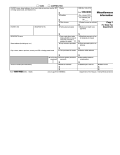 Form 1099-MISC – for reporting certain payments made by a business or organization above specified dollar thresholds
Form 1099-MISC – for reporting certain payments made by a business or organization above specified dollar thresholds
Download: PDF
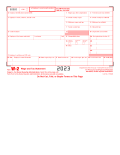 Form W-2 – to record wages paid to an employee and taxes withheld during a calendar year
Form W-2 – to record wages paid to an employee and taxes withheld during a calendar year
Download: PDF
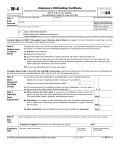 Form W-4 – to obtain employee withholding amounts for correct income tax deductions
Form W-4 – to obtain employee withholding amounts for correct income tax deductions
Download: PDF
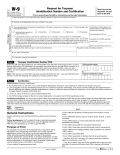 Form W-9 – used to obtain a taxpayers TIN for recording payments made
Form W-9 – used to obtain a taxpayers TIN for recording payments made
Download: PDF
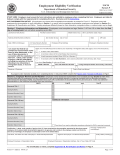 Form I-9 – verifies an employee’s eligibility to work in the U.S.
Form I-9 – verifies an employee’s eligibility to work in the U.S.
Download: PDF
 Form 941 – for employers to report federal payroll taxes withheld
Form 941 – for employers to report federal payroll taxes withheld
Download: PDF
IRS Forms: By Category
Business Tax Forms – Specific forms for partnerships, corporations, sole proprietorships, small businesses, deduction, and miscellaneous forms.
Employment/Wage Tax Forms – used by employers to report wages paid to employees and the resulting taxes withheld from employee paychecks.
Investment Tax Forms – to report gains, losses, and other information from investment activities.
Retirement Tax Forms – filed to report contributions, distributions, and other information related to retirement accounts.
Self-Employment Forms – to report income for individuals that are self-employed or work as independent contractors
Unemployment Tax Forms – used to report and pay taxes related to unemployment compensation.
Filing Deadlines
Filing deadlines can vary depending on the type of return and taxpayer classification. Returns are generally due on April 15th (National Tax Day), or, if the 15th is on a weekend, the following business day.
2024 Tax Day
The official day to file 2023 taxes is Monday, April 15th, 2024.
Employer Deadlines
| January 1/31/24 (Tue) |
February 2/28/24 (Wed) |
March 3/15/24 (Fri) |
March 3/31/24 (Fri) |
April 4/15/24 (Mon) |
| Form 1099-NEC Employers (without all) |
Form 1096 All Employers |
Form 1065 Partnerships |
Form 1099-MISC All Employers |
Form 1040 Individuals |
| Form W2 All Employers |
Form 1120-S S Corporations |
|||
| Form W3 All Employers |
Form 2553 Corporations |
|||
| Form 941 All Employers |
Freelancer/Self-Employed Deadlines
| April 4/15/24 (Mon) |
June 6/15/24 (Sat) |
September 9/16/24 (Mon) |
January 1/15/25 (Wed) |
| Form 1040 (Individuals) |
Form 1040-ES (Individuals) | Form 1040-ES (Individuals) | Form 1040-ES (Individuals) |
Employee Deadlines
| January 1/10/24 (Wed) |
February 2/15/24 (Thurs) |
April 4/15/24 (Mon) |
July 7/31/24 (Wed) |
| Form 4070 (Employees) | Form W-4 (Employees) | Form 1040 (Individuals) | Form 5500 (Employees) |
Filing Extensions
Form 4868 can be used to request an extension, but it must be filed before the tax day deadline. If granted, the taxpayer has until October 15th to file their taxes.
A filing extension does not grant an extension for payment. Late fees will be charged if tax payments are late.
How to File
Depending on the document, IRS forms can be filed electronically, by mail, by fax, or by a tax professional.
Electronic Filing
- IRS Free File Guided Tax Preparation – Available for free to any taxpayers with an AGI (adjusted gross income — or your net taxable income minus eligible deductions) of less than $79,000.
- Free File Fillable Forms – Available for all taxpayers. The taxpayer must use publications and must do the legwork to understand and fill out the forms.
- Paid Software – Popular tax software providers like TurboTax, H&R Block and TaxAct guide taxpayers through tax forms and electronically file forms. These paid platforms range from free to $200+.
Mail Filing
IRS tax forms can be filed by mail. Taxpayers can obtain the necessary forms for filing, complete them, and mail them to the IRS address listed on the form. Some addresses may differ when a payment is or is not included.
Returns processed via mail can be delayed by weeks. The IRS notes on its website that taxpayers and tax professionals are encouraged to file returns electronically.
